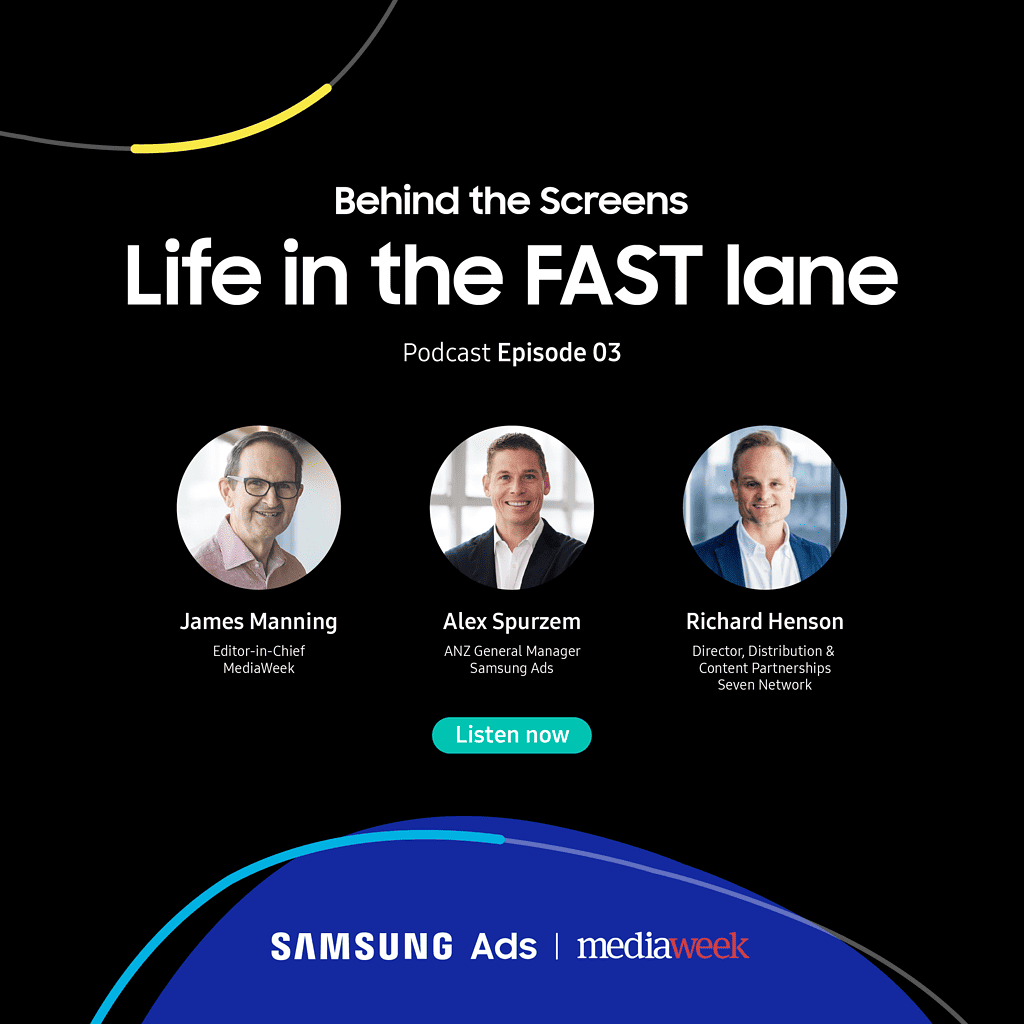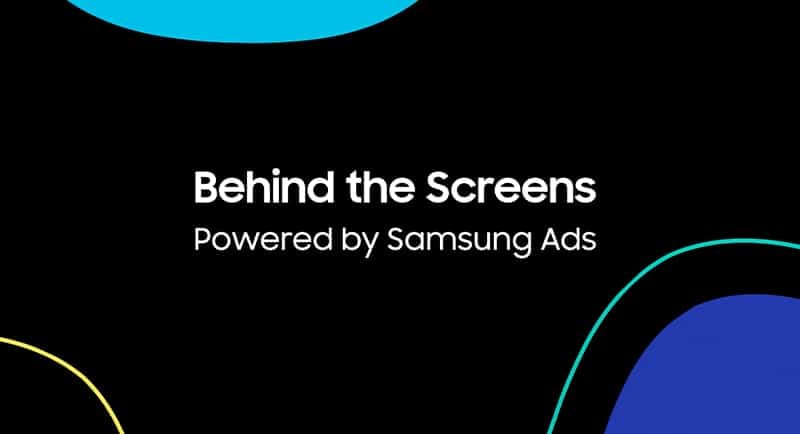This month, Mediaweek and Samsung Ads launched a video series called Behind the Screens.
The five-part shortform series presents interviews conducted by Mediaweek editor-in-chief James Manning.
Each episode features a key player in the TV sector who shares insights about the latest trends in the sector from changing viewing habits to advertising business models. The guests have been brought together to discuss challenges, opportunities and the transformation of the TV landscape.
Guests across the rest of the series also feature executives from Nine, Foxtel Media, Paramount ANZ, the IAB, EssenceMedia and Samsung Ads.
Samsung Ads is Advanced TV advertising. Its smart TV advertising solutions are built on data from millions of Smart TVs in Australia.
In the third episode, Mediaweek speaks with Richard Henson, Seven Network director distribution & content partnership, and Alex Spurzem, Samsung Ads ANZ general manager.
In the first episode Cathy Oh, VP & global head of marketing Samsung Ads, spoke about how technology is driving viewing behaviours, the future of connected TV advertising and key questions for marketers.
Watch episode 1 of Behind the Screens here.
In the second episode, Mark Frain, CEO Foxtel Media, and Nick Thomas, chief investment officer at EssenceMediacom Australia spoke about the importance of attention as a measurement of advertising success.
Watch episode 2 of Behind the Screens here.
Here are the highlights from episode three with Richard Henson, Seven Network director distribution & content partnership, and Alex Spurzem, Samsung Ads ANZ general manager.
Welcome to Mediaweek Behind the Screens. This episode is called Life in the Fast Lane, so let’s start off with some definitions. What is FAST?
Henson: FAST is an acronym. It stands for free ad supported streaming television, FAST channels are linear digital channels delivered over the internet, and they’re akin to that kind of passive lean-back traditional television experience with an EPG and commercial breaks. FAST channels are available on all devices – CTV, web and mobile.
By their nature, do they need to be specialist? Can you mess it up if you try and go too broad?
Spurzem: FAST doesn’t reinvent the wheel, right? FAST mimics the scheduled viewing experience that consumers have been used to for many decades. Now what does that mean in terms of content? It tends to be curated and it embraces a bit of simplicity to get into a singular show or just one genre and sort of get your fix.
Henson: For us on 7plus FAST allows us to offer our viewers an alternate consumption option and we have a choice of live, VOD and FAST.
Do broadcasters have a role in education of explaining to people what FAST is and how they can consume it?
Spurzem: I think we all do. If you look across the board, there’s about 400 channels in Australia. We were one of the first ones with Samsung TV Plus as a dedicated FAST platform. And then we have the other model, which is FAST channels in an app as part of the product content offering, like Richard has with 7plus.
Henson: It’s actually really easy for consumers and you don’t need to buy new hardware. If you’ve got something you watch Netflix on, you can consume FAST.
So far, what have been your drivers for growth?
Henson: For me, there has never been more content available on more platforms than there is now. The options are endless. And I do think that FAST has kind of emerged almost as an answer to that paradox of choice. You know, that endlessly scrolling Netflix and not finding something to watch fatigue, it’s very real. FAST as headline allows us to reach new audiences. It allows us to aid content discovery and increase engagement. We’re able to monetise our content in ways we hadn’t previously been able to in terms of audience growth. A large part of the answer is in the very definition of FAST – it’s free.
Spurzem: Just look at the subscription streaming model, the growth there seems to certainly be tapering off. It looks like Australians are evaluating how many subscriptions they want to afford. Now enter things like FAST where the content is compelling, that certainly is a driver. But you know what the other driver is, the majority of consumers actually don’t mind watching ads in return for free content.
What sort of content is working in this market?
Spurzem: We saw a lot of success for quite a while with single IP channels. Think Baywatch channel, Mythbusters was our best performing channels for quite some time. Earlier this year, we launched our first dedicated FAST channel with Sky News Now. And within a number of weeks, that became the number one channel. I don’t think it’s unreasonable to expect that also in Australia, we’ll see more big names, big brands come to the table with content that is purpose built for a FAST environment.
Henson: One of the great benefits FAST is its flexibility. We can spin new channels really, really, quickly. We’ll double down where things work. We won’t shy from retiring channels that don’t work, and we will actively look for opportunities to surface new and exciting content that works for both audiences and advertisers.
We’ve talked about the price being right for the consumer. How far can you push the ad experience to get a return on your investment?
Spurzem: The consumer experience is everything. We work with an average of eight to 10 minutes [of ads] per hour. That tends to be lower than broadcast television and that currently is the sweet spot for where we bring a great consumer experience. FAST can do a few things that you cannot do on linear television. It’s still the big screen in the living room that’s appealing to advertisers, but you can also bring some precision both in terms of measurement and targeting that otherwise is only available in a digital environment.
We envision a world where free streaming isn’t going to replace subscription, right? It’s going to be complementary to that. Once you realise that, you also realise how FAST from an advertising point of view is a great way to find audiences that are otherwise hard to find, like those that are light on linear streaming.
One of the things that we’re looking at is to complement FAST channels with on demand content, and bring the best of both worlds. Consumers don’t differentiate, for them it’s just TV, but they’re driven by the choice of content that they encounter on the platforms and that’s one of the things we’re working on.
Henson: It’s just a rising tide, giving viewers and consumers every opportunity to consume content, the way they want to.

You can watch and podcast Behind the Screens powered by Samsung Ads.
